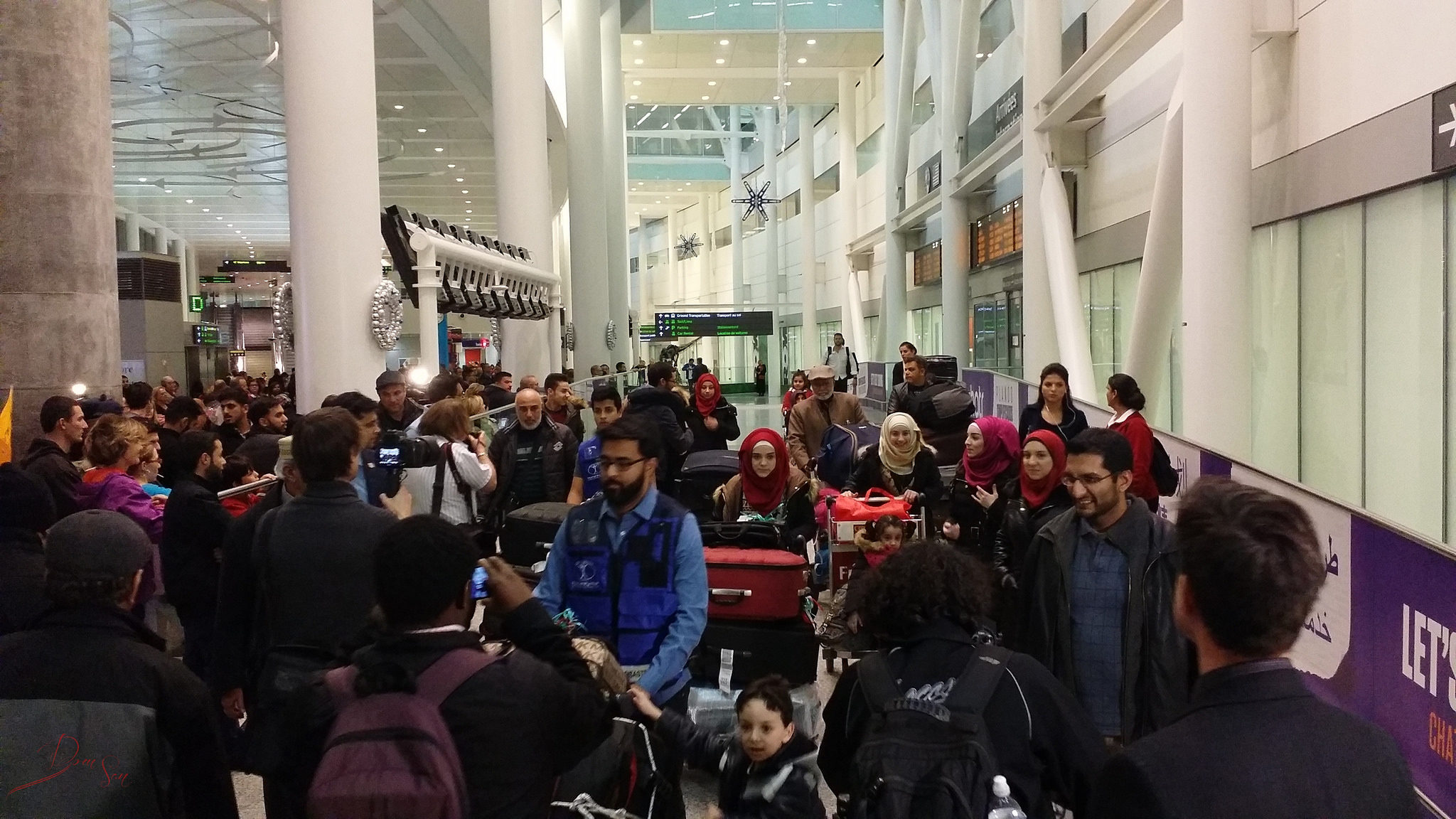By Sandra M. Riano for The Conversation Canada
Anti-migrant sentiment has been big news in Canada and around the world in recent years, and new research suggests that although media coverage of refugee issues has improved, it still needs work.
Racist, anti-refugee and Islamophobic views have been blamed for the mosque shooting in Quebec City, the travel ban in the United States, Brexit and increasing support for far-right nationalist political parties. Some observers argue that the media encourages fear and hate towards refugees, while others counter that news outlets do their best with the information and resources at hand.
As a communications researcher, I studied how Canadian media covered the federal government’s Welcome Refugees plan of 2015. I examined how the Globe and Mail, National Post, the Vancouver Sun and the Toronto Star reported on the Syrian refugees headed to Canada, and the possible repercussions for those refugees due to how they were consequently perceived by the public.
Fear-based coverage
The most prevalent theme in the coverage was the impact that refugees could have on Canada’s social, logistic, cultural and economic infrastructure.
Language such as “planeloads of Syrian refugees,” “successive waves of families” and references to refugees as large numbers to be “distributed” or “housed” across the country left the impression that migrants were a less-than-human mass pounding at the doors of Canadians. Painting refugees in such broad strokes served to dehumanize them and suggested the public should be on guard and ignore their plight.
Coverage didn’t highlight the contributions of past migrants nor the potential of incoming refugees, which created a perception that migrants are liabilities. Consequently, being anti-migrant could be viewed as a matter of national protectiveness. That put refugees at risk of being victimized and blamed for future societal issues.
Migrant issues are often politicized and susceptible to fear-based coverage. My research shows that Canada was no exception as it welcomed Syrian refugees. Held up as an example of Trudeau’s leadership, the Welcome Refugees plan was presented as a “political Trojan horse” that posed multiple threats: potential terrorists, the threats of homegrown radicalization and the prospect that Syrian refugees would fail to integrate, to name a few.
Following the Paris terrorist attacks and the Welcome Refugee plan’s delay, the media echoed the public’s fears and failed to contextualize Canada’s refugee program process, Canada’s humanitarian responsibility or its international law commitments. Using this politicized approach, migrant issues and refugees were positioned as pawns in the political arena, too risky to trust — at the time and in the future — and devoid of human rights.
What’s worse, my research found this framing was used to make generalized judgments of those who are “not from here,” and to scapegoat them for any perceived threats.
These characterizations were possible since most people don’t often encounter migrants in their everyday lives. That’s harmful because when the contributions and positive potential of vulnerable and disenfranchised people are invalidated, their voices are muted within the public.
Portrayed as potential criminals without trial or recourse to defend themselves, migrants are essentially erased and marginalized from society.
Us versus them
Inadequate media coverage had the potential to marginalize migrants even when linking the Welcome Refugee plan to social responsibility, the Canadian identity and the human rights of refugees. A focus on sentimental, dramatic and mawkish human interest stories rather than pragmatic coverage also ran the risk of being regarded as emotional manipulation by skeptical readers.
A critical media examination of the plan, however, including context about how migration has and will continue to occur in Canada and around the world, would have helped normalize and humanize refugees without infantilizing their experiences.
The coverage also often presented migrant issues as mattering to certain groups alone: community groups, religious associations, refugee advocacy groups and those sponsoring them. It presented refugees as not part of the general population; instead, there was an “us versus them” element to the coverage.
Instead of being portrayed as future contributing members of society who will help shape Canadian culture, refugees were portrayed as being on the outside fringes of society, rather than being part of it.
Media can ignite fear and distrust
Such lenses serve to justify discrimination and prejudice towards refugees by those who are uncertain about or unfamiliar with migrants. Every refugee can then be viewed as a potential terrorist deserving of bigotry and distrust: every refugee is taking advantage of the social safety net and depleting national resources and is therefore deserving of scorn and hate; every refugee matters only to a small sector of the population, and thus is justifiably excluded from society and representation.
Fear and distrust of refugees does not appear out of nowhere. It’s ignited by poorly contextualized and thoughtless media coverage that promotes their “othering,” dehumanization and marginalization.
If we want to steer Canadian society into fairer and unbiased waters, the media needs to do a better job covering migrant issues. Only then can we hope for unbiased perceptions of migrants among the general public, and for refugees’ positive integration into Canadian society.
This story was originally published on The Conversation Canada and is republished here with the editor’s permission.

